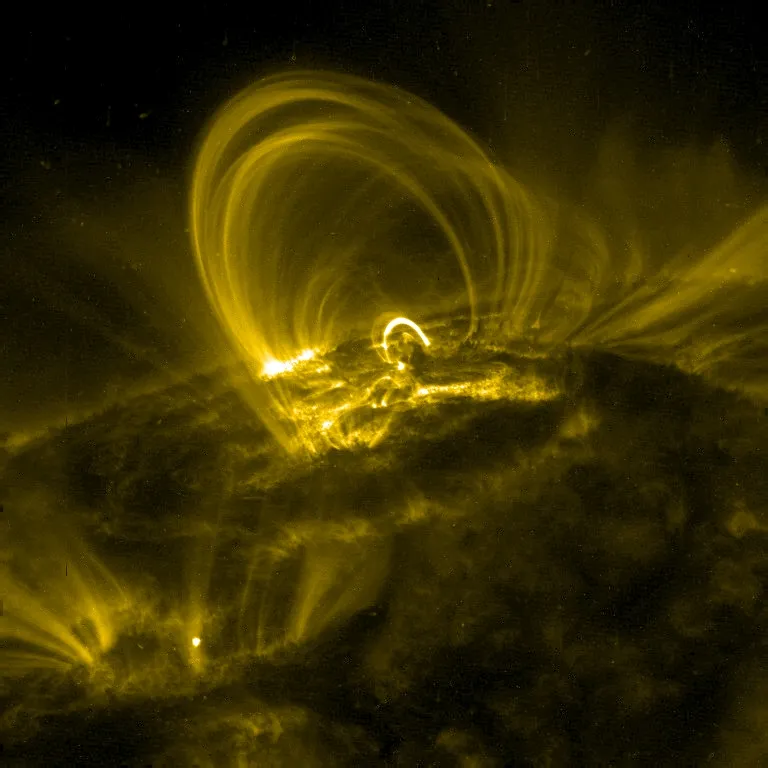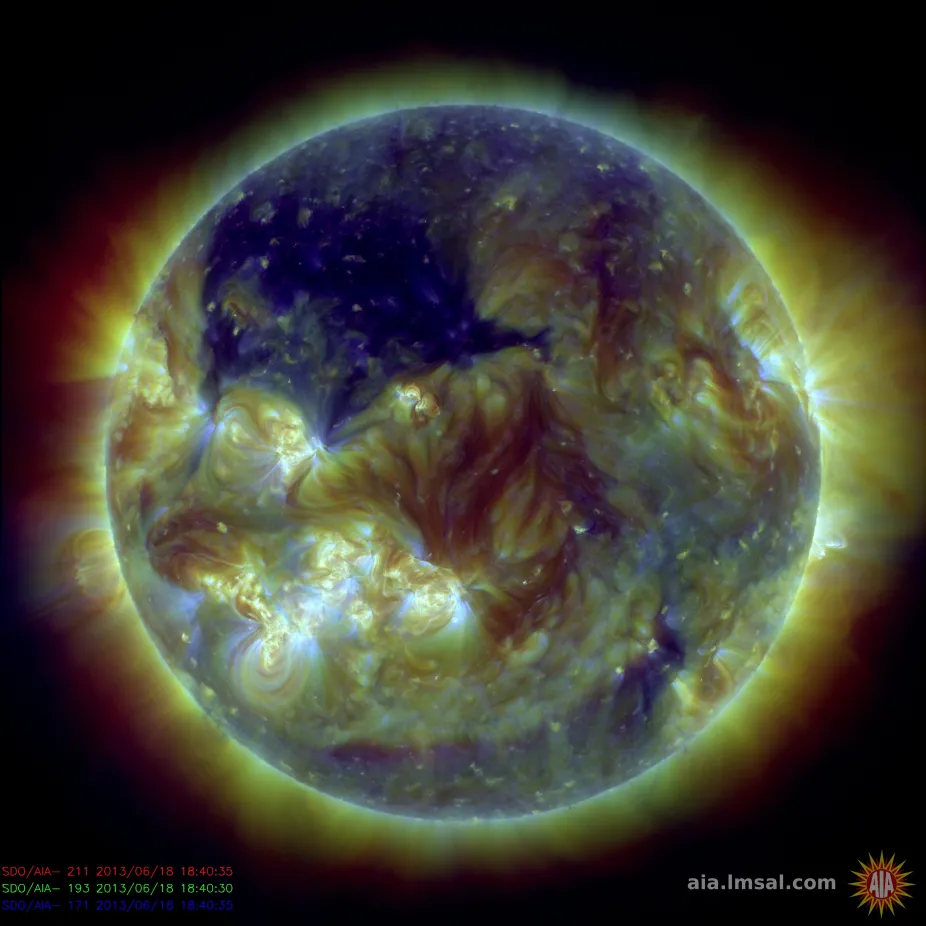Coronal Loops

Plasma flows along closed magnetic field lines in the corona that pull it back toward the solar surface, forming structures that appear to loop.
Wikipedia/Coronal_loop
Coronal loops are ropey, curving strands of plasma that appear as arcs above the Sun's surface. Hot, dense plasma causes these loops to glow. The electrified plasma flows along the curving lines of powerful magnetic fields, giving the coronal loops their characteristic shape.
Coronal loops can extend upwards many thousands of kilometers above the Sun’s surface. Some loops are extremely hot, having temperatures well above a million degrees. The energy they give off is almost entirely ultraviolet rather than in the visible light spectrum, which means they can only be seen with the help of specialized equipment.
Coronal Loops, Coronal Holes, and Sunspots
Coronal loops are often associated with sunspots, which are places on the Sun's surface where powerful magnetic fields break through and extend up into the Sun's atmosphere. Coronal loops often appear to arc between pairs of sunspots with opposite magnetic poles. Coronal loops are more common around solar maximum, when the Sun is most active and there are many sunspots.
During solar minimum, when the Sun is least active, another feature of the corona is apparent — dark patches called coronal holes. Coronal holes are openings in the Sun’s magnetic field where streams of high-speed solar wind rush out of the solar atmosphere. The plasma in these coronal hole regions is cooler and more dense than in other parts of the corona. Coronal holes appear dark in X-ray and ultraviolet images of the Sun, but they are invisible to the eye. Though scientists aren’t completely sure what causes coronal holes to form, there seems to be a connection between the location of sunspots on the solar surface and coronal holes in the Sun’s atmosphere. Perhaps when a sunspot fades away, a coronal hole is left behind.

The dark blue area covering almost the entire upper left quadrant of the Sun is a giant coronal hole, captured by NASA’s Solar Dynamics Laboratory in June 2013. This coronal hole is about 400,000 miles wide — more than 50 times as wide as Earth.
NASA
Large coronal holes can cause geomagnetic storms to occur in Earth's magnetosphere and result in colorful displays of auroras in the skies near Earth's poles.
Coronal Loops Might Not Be Loops at All
Scientists have long thought that the strands of plasma extending above the Sun’s surface formed loops. New research by NCAR’s High Altitude Observatory suggests that coronal loops actually may not be loops at all. Instead, they might appear to loop due to an optical illusion. Because the Sun’s corona is thin and transparent, it is difficult to observe whether structures that overlap each other are actually looping or not. Instead, the more recent coronal veil hypothesis suggests that there are wrinkles or folds in sheets of plasma, much like you would observe in a piece of fabric. These findings are based on models that examine the 3D structure of plasma in the Sun’s corona and remind us that there is still much to discover about our Sun.